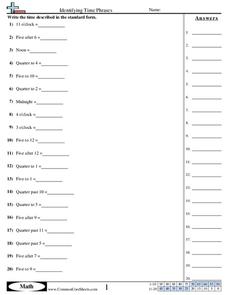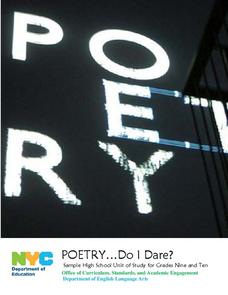Curated OER
The Science of Microbes
Looking for an interesting text to share the world of microbes with your middle school classroom? The edition contains explanations, worksheets, experiments, discussions, and links to outside sources for a true and complete microbiology...
Curated OER
Voices from Little Rock: Understanding the Civil Rights Movement through Primary Sources
As part of a study of the Civil Rights Movement, class members examine documents associated with the Little Rock Nine, the Brown v. Board of Education ruling, the 14th and 15th Amendments to the US Constitution, and chapters from Melba...
Curated OER
Adding and Subtracting Fractions
Fifth graders put their fraction knowledge to work by reading word problems and deciding whether to add or subtract the given fractions. Terms such as combined, total, difference, and left indicate which operation to use.
Curated OER
Identifying Fraction Location Positive and Negative
Sixth graders practice their fraction and number line skills by identifying where a given fraction is located on the line. Provide mathematicians with a colored pencil for easy identification of the fraction.
Common Core Sheets
Fraction Location on Number Line
Once your class has mastered the identification of fractions, have them locate fractions on a number line. This sheet reinforces interval sizes of parts included in a whole, and directly relates to the standards associated with Common...
E Reading Worksheets
Persuasive Writing - Introductory Paragraph Review
Master a well-organized thesis statement with a short activity for a persuasive writing unit. Young writers read five different introductory paragraphs about various topics, find the main ideas addressed in each thesis statement, and jot...
Curated OER
Unit 2: Post-Revolution: The Critical Period 1781-1878
The post-Revolutionary Period of 1781-1787, also known as the Critical Period, is the focus of a series of lessons that prompt class members to examine primary source documents that reveal the instability of the period of the Articles of...
Curated OER
Unit 1: Building Historical Background Knowledge: The Road to Revolution 1754–1776
What were the conditions that led to the American Revolution? What are the conditions that lead to revolution in other times and places? Class members examine primary source materials and use evidence drawn from these documents to craft...
Federal Reserve Bank
It's Your Paycheck
Beyond reading and arithmetic, one of the most important skills for graduating seniors to have is fiscal literacy and responsibility. Start them on the right financial track with nine lessons that focus on a variety of important personal...
Curated OER
On Target: Strategies to Help Readers Make Meaning through Inferences
Here's a resource that explicitly teaches, models, and provides readers with opportunities to practice the process of drawing inferences from text. Packed with strategies elementary, middle, and high school teachers can use, the resource...
Common Core Sheets
Finding Ending Time with a Numberline
Third graders determine the end time on a number line, given the start time and elapsed time.
Common Core Sheets
Finding Elapsed Time with a Numberline
Third graders find the elapsed time on a number line, given the start and end times.
Mississippi State University
The Five Senses
Your learners engage their five senses every day without knowing it. Help them identify their experiences and extend their understanding with a month full of lessons designed for the five senses. Kids focus on a different sense every...
Common Core Sheets
Finding Start Time with a Numberline
Third graders determine the start time on a number line, given the elapsed time and end time.
Common Core Sheets
Matching Clocks (5 Minute Increments)
Second graders match the time on an analog clock to the time on a digital clock. Each sheet has 16 problems for solving.
Common Core Sheets
Finding Elapsed Time
Third graders read word problems to determine the elapsed time, given the start and end time.
Read Works
Cats in the Catacombs
Fourth graders read a short story and then answer questions based on what they read. Learners are asked to support their answers with evidence from the text.
Common Core Sheets
Finding Starting Time
Third graders read word problems to determine the start time, given the elapsed time and end time.
Common Core Sheets
Reading an Analog Clock (1 Minute Increments)
Third graders read analog clocks and tell time to the nearest minute. AM and PM do not matter in this exercise.
Common Core Sheets
Identifying Time Phrases
Quarter to seven. Noon. Five after three. These are a few examples of the time phrases students must identify. Most of the times to not indicate AM or PM; however, noon and midnight should be identified appropriately.
Common Core Sheets
Reading an Analog Clock (5 Minute Increments)
Second and third graders practice reading analog clocks to the nearest five minutes.
New York City Department of Education
Poetry…Do I Dare?
Whether you're considering a poetry unit or just want to incorporate more poetry in your curriculum, this unit plan is a must-have. Packed with poems, teaching points, powerful prompts, and poetry performance suggestions, the resource is...
Common Core Sheets
Creating Area and Perimeter Rectangles
Third graders are challenged to draw their own rectangles given a specific area or perimeter. There are no examples of how each rectangle should look, so it is important for learners to persevere in finding a solution. There is more than...
Common Core Sheets
Rectangles - Same Perimeter and Different Area
Given a rectangle with specified dimensions, learners are prompted to create a new rectangle with the same perimeter, but a different area. This challenges third graders to think about perimeter and area in a new way. Each problem...

























